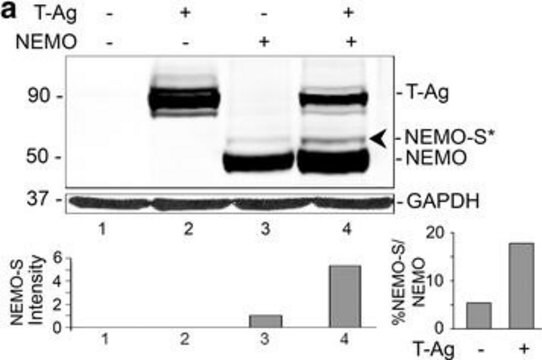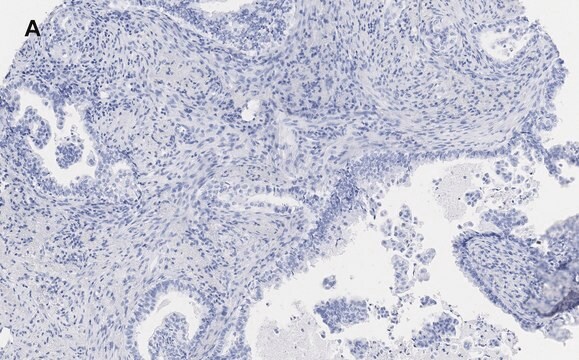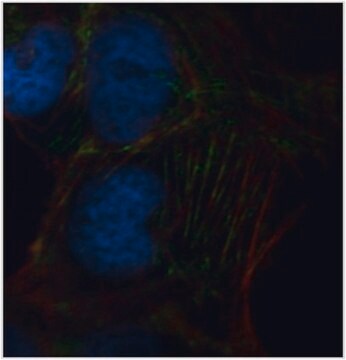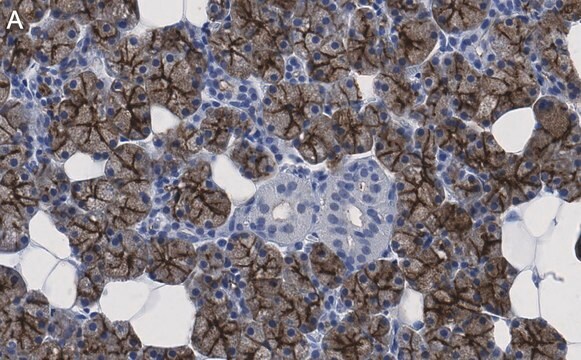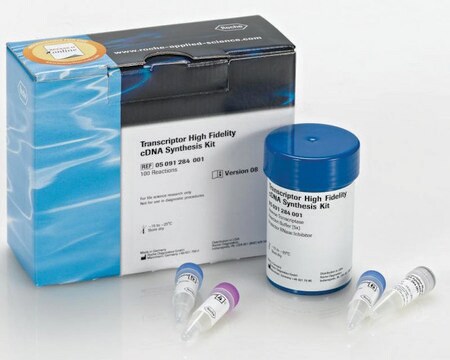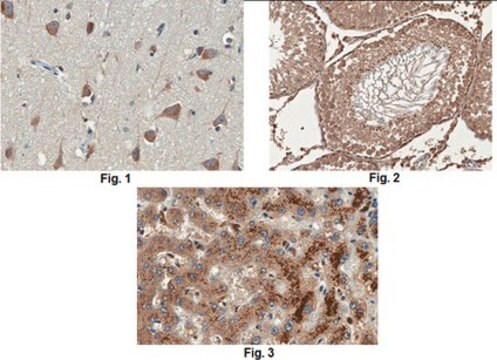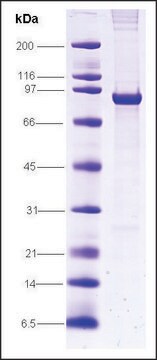MABS1221
Anti-GLEPP1/PTPRO Antibody, clone 5C11
clone 5C11, from mouse
Sinônimo(s):
Receptor-type tyrosine-protein phosphatase O, Glomerular epithelial protein 1, Osteoclastic transmembrane protein-tyrosine phosphatase, Protein tyrosine phosphatase U2, PTP-OC, PTP phi, PTP-U2, PTPase U2, R-PTP-O
About This Item
Produtos recomendados
fonte biológica
mouse
Nível de qualidade
forma do anticorpo
purified antibody
tipo de produto de anticorpo
primary antibodies
clone
5C11, monoclonal
reatividade de espécies
human
não deve reagir com
mouse, rat, rabbit
técnica(s)
electron microscopy: suitable
immunofluorescence: suitable
immunohistochemistry: suitable
Isotipo
IgG2bκ
nº de adesão NCBI
nº de adesão UniProt
Condições de expedição
wet ice
modificação pós-traducional do alvo
unmodified
Informações sobre genes
human ... PTPRO(5800)
Descrição geral
Especificidade
Imunogênio
Aplicação
Immunofluorescence Analysis: Prior to purification, clone 5C11 hybridoma culture supernatant detected GLEPP1 (PTPRO) immunoreactivity predominantly on visceral glomerular epithelial cell (VGEC) foot processes along the glomerulus (GBM) in manthanol-fixed, adult human kidney cryosections, while altered GLEPP1 staining patterns were seen in kidney sections from individuals with congenital nephrotic syndrome of the Finnish type (CNF), minimal-change nephropathy (MCN), or Hodgkin’s disease (Sharif, K., et al. (1998). Exp. Nephrol. 6(3):234-244).
Electron Microscopy Analysis: Prior to purification, clone 5C11 hybridoma culture supernatant detected GLEPP1 (PTPRO) immunoreactivity at the apical aspect of the foot processes and the cell membrane of larger processes in paraformaldehyde-fixed, paraffin-embedded normal human adult kidney sections, while GLEPP1 immunoreactivity was seen redistributed from glomerulus (GBM) on the apical cell membrane of VGECs to microvilli on kidney sections from individuals with congenital nephrotic syndrome of the Finnish type (CNF) or minimal-change nephropathy (MCN) (Sharif, K., et al. (1998). Exp. Nephrol. 6(3):234-244).
Qualidade
Immunohistochemistry Analysis: A 1:50 dilution of this antibody detected GLEPP1/PTPRO in human kidney tissue.
Descrição-alvo
forma física
Outras notas
Não está encontrando o produto certo?
Experimente o nosso Ferramenta de seleção de produtos.
Código de classe de armazenamento
12 - Non Combustible Liquids
Classe de risco de água (WGK)
WGK 1
Ponto de fulgor (°F)
Not applicable
Ponto de fulgor (°C)
Not applicable
Certificados de análise (COA)
Busque Certificados de análise (COA) digitando o Número do Lote do produto. Os números de lote e remessa podem ser encontrados no rótulo de um produto após a palavra “Lot” ou “Batch”.
Já possui este produto?
Encontre a documentação dos produtos que você adquiriu recentemente na biblioteca de documentos.
Nossa equipe de cientistas tem experiência em todas as áreas de pesquisa, incluindo Life Sciences, ciência de materiais, síntese química, cromatografia, química analítica e muitas outras.
Entre em contato com a assistência técnica